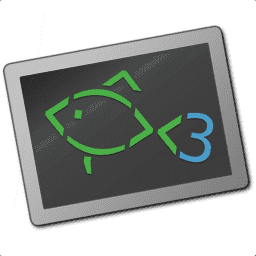commandline - set or get the current command line buffer¶
Synopsis¶
commandline [OPTIONS] [CMD]
Description¶
commandline can be used to set or get the current contents of the command line buffer.
With no parameters, commandline returns the current value of the command line.
With CMD specified, the command line buffer is erased and replaced with the contents of CMD.
The following options are available:
- -C or --cursor
Set or get the current cursor position, not the contents of the buffer. If no argument is given, the current cursor position is printed, otherwise the argument is interpreted as the new cursor position. If one of the options -j, -p or -t is given, the position is relative to the respective substring instead of the entire command line buffer.
- -B or --selection-start
Get current position of the selection start in the buffer.
- -E or --selection-end
Get current position of the selection end in the buffer.
- -f or --function
Causes any additional arguments to be interpreted as input functions, and puts them into the queue, so that they will be read before any additional actual key presses are. This option cannot be combined with any other option. See bind for a list of input functions.
- -h or --help
Displays help about using this command.
The following options change the way commandline updates the command line buffer:
- -a or --append
Do not remove the current commandline, append the specified string at the end of it.
- -i or --insert
Do not remove the current commandline, insert the specified string at the current cursor position
- -r or --replace
Remove the current commandline and replace it with the specified string (default)
The following options change what part of the commandline is printed or updated:
- -b or --current-buffer
Select the entire commandline, not including any displayed autosuggestion (default).
- -j or --current-job
Select the current job - a job here is one pipeline. Stops at logical operators or terminators (;, &, and newlines).
- -p or --current-process
Select the current process - a process here is one command. Stops at logical operators, terminators, and pipes.
- -s or --current-selection
Selects the current selection
- -t or --current-token
Selects the current token
- --search-field
Use the pager search field instead of the command line. Returns false is the search field is not shown.
The following options change the way commandline prints the current commandline buffer:
- -c or --cut-at-cursor
Only print selection up until the current cursor position. If combined with
--tokens-expanded, this will print up until the last completed token - excluding the token the cursor is in. This is typically what you would want for instance in completions. To get both, use bothcommandline --cut-at-cursor --tokens-expanded; commandline --cut-at-cursor --current-token, orcommandline -cx; commandline -ctfor short.- -x or --tokens-expanded
Perform argument expansion on the selection and print one argument per line. Command substitutions are not expanded but forwarded as-is.
- --tokens-raw
Print arguments in the selection as they appear on the command line, one per line.
- -o or tokenize
Deprecated; do not use.
If commandline is called during a call to complete a given string using complete -C STRING, commandline will consider the specified string to be the current contents of the command line.
The following options output metadata about the commandline state:
- -L or --line
If no argument is given, print the line that the cursor is on, with the topmost line starting at 1. Otherwise, set the cursor to the given line.
- --column
If no argument is given, print the 1-based offset from the start of the line to the cursor position in Unicode code points. Otherwise, set the cursor to the given code point offset.
- -S or --search-mode
Evaluates to true if the commandline is performing a history search.
- -P or --paging-mode
Evaluates to true if the commandline is showing pager contents, such as tab completions.
- --paging-full-mode
Evaluates to true if the commandline is showing pager contents, such as tab completions and all lines are shown (no “<n> more rows” message).
- --is-valid
Returns true when the commandline is syntactically valid and complete. If it is, it would be executed when the
executebind function is called. If the commandline is incomplete, return 2, if erroneus, return 1.- --showing-suggestion
Evaluates to true (i.e. returns 0) when the shell is currently showing an automatic history completion/suggestion, available to be consumed via one of the forward- bindings. For example, can be used to determine if moving the cursor to the right when already at the end of the line would have no effect or if it would cause a completion to be accepted (note that forward-char-passive does this automatically).
Example¶
commandline -j $history[3] replaces the job under the cursor with the third item from the command line history.
If the commandline contains
>_ echo $flounder >&2 | less; and echo $catfish
(with the cursor on the “o” of “flounder”)
The echo $flounder >& is the first process, less the second and and echo $catfish the third.
echo $flounder >&2 | less is the first job, and echo $catfish the second.
$flounder is the current token.
The most common use for something like completions is
set -l tokens (commandline -xpc)
which gives the current process (what is being completed), tokenized into separate entries, up to but excluding the currently being completed token
If you are then also interested in the in-progress token, add
set -l current (commandline -ct)
Note that this makes it easy to render fish’s infix matching moot - if possible it’s best if the completions just print all possibilities and leave the matching to the current token up to fish’s logic.
More examples:
>_ commandline -t
$flounder
>_ commandline -ct
$fl
>_ commandline -b # or just commandline
echo $flounder >&2 | less; and echo $catfish
>_ commandline -p
echo $flounder >&2
>_ commandline -j
echo $flounder >&2 | less
